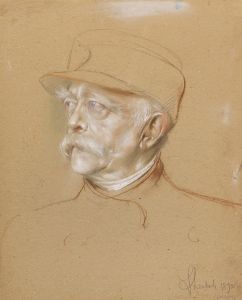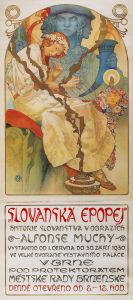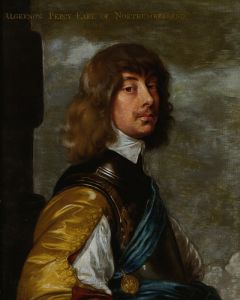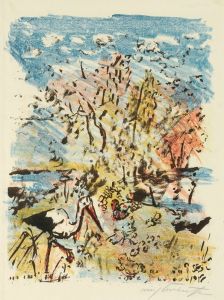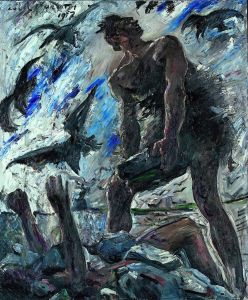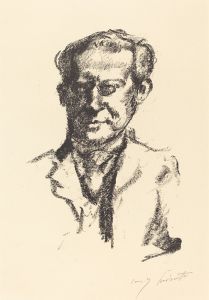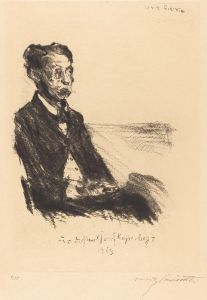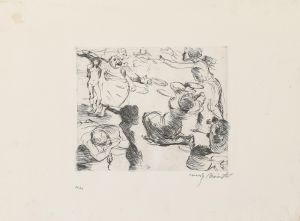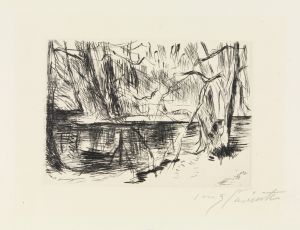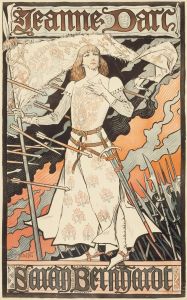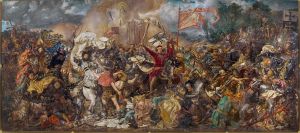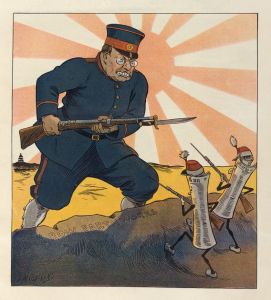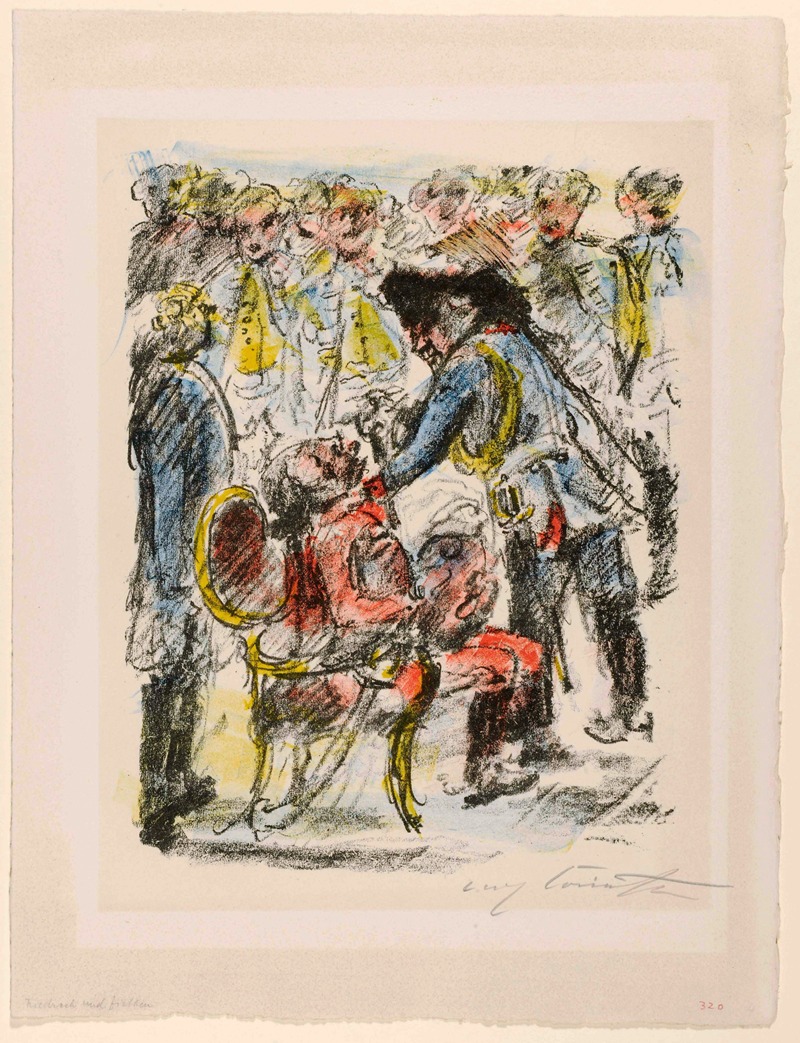
Der Alte Fritz Und Der Alte Ziethen ‘bleibe Er Nur Ruhig Sitzen’
A hand-painted replica of Lovis Corinth’s masterpiece Der Alte Fritz Und Der Alte Ziethen ‘bleibe Er Nur Ruhig Sitzen’, meticulously crafted by professional artists to capture the true essence of the original. Each piece is created with museum-quality canvas and rare mineral pigments, carefully painted by experienced artists with delicate brushstrokes and rich, layered colors to perfectly recreate the texture of the original artwork. Unlike machine-printed reproductions, this hand-painted version brings the painting to life, infused with the artist’s emotions and skill in every stroke. Whether for personal collection or home decoration, it instantly elevates the artistic atmosphere of any space.
Lovis Corinth was a prominent German painter and printmaker whose work bridged the transition from Impressionism to Expressionism in the late 19th and early 20th centuries. One of his notable works is "Der Alte Fritz Und Der Alte Ziethen ‘bleibe Er Nur Ruhig Sitzen’," which translates to "Old Fritz and Old Ziethen 'Just Let Him Sit Quietly'." This painting reflects Corinth's interest in historical themes and his ability to capture character and emotion.
The painting depicts a scene involving Frederick II of Prussia, commonly known as Frederick the Great or "Old Fritz," and Hans Joachim von Ziethen, a Prussian cavalry general. Frederick the Great was a significant figure in European history, known for his military victories, his role in the Enlightenment, and his influence on the cultural landscape of Prussia. General Ziethen was one of Frederick's trusted military leaders, renowned for his service during the Silesian Wars and the Seven Years' War.
Corinth's painting captures a moment of interaction between these two historical figures. The title, "Just Let Him Sit Quietly," suggests a scene of calm or contemplation, possibly indicating a moment of reflection or a pause amidst the duties of leadership and military strategy. Corinth was known for his ability to convey psychological depth and complexity in his portraits, and this work is no exception. The expressions and postures of the figures are likely intended to convey their personalities and the nature of their relationship.
Lovis Corinth was born in 1858 in Tapiau, East Prussia (now Gvardeysk, Russia). He studied art in Königsberg, Munich, and Paris, where he was influenced by the Impressionists. Corinth's style evolved over his career, moving from a more traditional academic approach to a freer, more expressive technique. This evolution is evident in his brushwork and use of color, which became more vigorous and dynamic over time.
In "Der Alte Fritz Und Der Alte Ziethen," Corinth's brushwork and color palette may reflect his mature style, characterized by bold strokes and a vibrant use of color. His approach often involved a loose, painterly technique that conveyed movement and emotion, aligning with the Expressionist tendencies that were emerging during his lifetime.
Corinth's work was well-regarded in his time, and he became a leading figure in the Berlin Secession, an art movement that sought to challenge the conservative art establishment in Germany. His contributions to art were recognized with numerous exhibitions and accolades, and he continued to produce influential work until his death in 1925.
"Der Alte Fritz Und Der Alte Ziethen ‘bleibe Er Nur Ruhig Sitzen’" is a testament to Corinth's skill in historical portraiture and his ability to capture the essence of his subjects. The painting remains an important part of his oeuvre, reflecting both his technical prowess and his interest in the historical narratives of his homeland.





